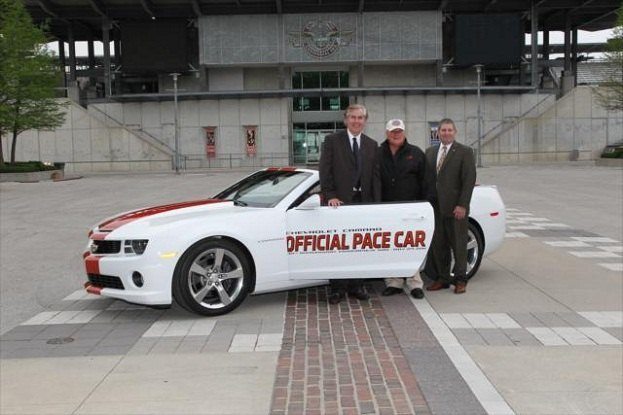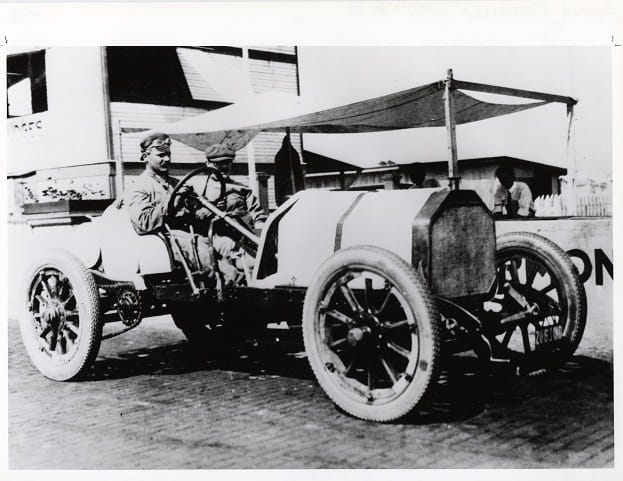Established in 1911 as sweepstakes race for motor vehicles, the Indianapolis 500 was held to demonstrate through competition the incredible progress of the still-infant automobile. As vehicles like the Ford Model T began to introduce the mainstream American public to the thrill of motoring, imagine the amazement of the first Indianapolis 500 fans as cars manoeuvred around the 2.5 mile, rectangular-shaped track achieving speeds over 80 miles per hour a lap. A Marmon Wasp crossed the line first in the 1911 Indy 500 establishing the Marmon Motor Car Company with important publicity. In fact, several participating automakers benefited from the early promotion.
Unfortunately for early automotive manufacturers, which included the Marmon Motor Car Company, the automotive marketplace would be an endurance test they were unable to win. Case, Knox, National and Lozier are a few of the names that competed in the inaugural Indy 500 that would not exist past the 1920s. One automaker who endured the stresses of the 500-mile race and the 100 years of market pressures was Buick.
A General Motors brand just recently enjoying resurgence, the younger Buick was significant in bringing another soon-to-be important name to American motorists. Driving a #16 Buick, a Swiss expatriate named Arthur Chevrolet started 14th in the 1911 Indianapolis 500. Though Arthur Chevrolet’s effort in the race ended with a mechanical problem after 30 laps, the surname would gain prominence in less than six months following the Indy 500. Arthur’s older brother Louis had made a business contact with early automobile magnate William Durant. Together the automaker Chevrolet was created. As the Indianapolis 500 marked 100 years as America’s top motorsport event, 2011 is also the centennial for another United States automotive staple. Both iconic to past as well as current motoring culture, Chevrolet and the Indianapolis 500 share a closely-knit existence.
In the early years, Chevrolet at the Indy 500 would be found on the driver sheets. All three Chevrolet brothers Arthur, Louis and Gaston would drive at the speedway. Youngest brother Gaston Chevrolet would win the 1920 Indianapolis 500 race achieving the most successful result. Sadly, Gaston would die in November of that year at the wooden track called the Beverly Hills Speedway along with his mechanic after a race crash. At the Indianapolis 500, none of the Chevrolet brothers actually drove Chevrolet automobiles. Since Louis Chevrolet left the auto company is founded with Durant, the three brothers actually formed their own automotive name called Frontenac. Successful, the Frontenac Motor Corporation dissolved shortly after younger brother Gaston’s fatal car accident. The remaining brothers would never compete at the Indianapolis Motor Speedway following Gaston’s 1920 victory.
The next time the Chevrolet name would be found at the Brickyard would be on a pace car vehicle. The first Chevrolet to serve pace car duties at the Indianapolis 500 would be a 1948 Fleetmaster Six-Series convertible. Through the years, the 1955 Chevrolet, the 1967 Chevrolet Camaro and most infamously the 2003 Chevrolet SSR would be given the spotlight controlling the field of Indy cars. Chevrolet would lead the field of the Indy 500 a total of 22 times including this year where a 2011 Chevrolet Camaro SS Convertible led the field in the hands of AJ Foyt.
While the Chevrolet brothers had never returned to the driver seat following the 1920 season, their name would be worn on an Indy car in the mid-1980s. Powering vehicles of legendary Indianapolis 500 team owner Roger Penske for the first time in 1986, the Ilmor-engineered Chevrolet Indy V-8 engine would push the Newman/Haas Racing team driver Mario Andretti to the Indy 500 pole in 1987. In 1988, Rick Mears wheeled his Penske-Chevrolet Indy engine to the Brickyard victory. Between 1987 and 1993, the Chevrolet Indy engine designed by Ilmor captured 5 pole positions and found victory lane 6 times. For the upcoming 2012 IZOD INDYCAR Series season, Chevrolet will return the competition at the Brickyard following a 19-year absence as a twin-turbocharged powerplant.
Concluding their 100-year anniversary since the first race, he 2011 Indianapolis 500 was especially memorable for a last lap, last corner pass by Dan Wheldon when rookie JR Hildebrand crashed into the turn 4 wall. Chevrolet will officially turn 100 on November 3rd and will definitely hope their official centennial party will be just as stunning.
Information Source: Indianapolis Motor Speedway
Photo Source: Indianapolis Motor Speedway, Ron McQueeney



